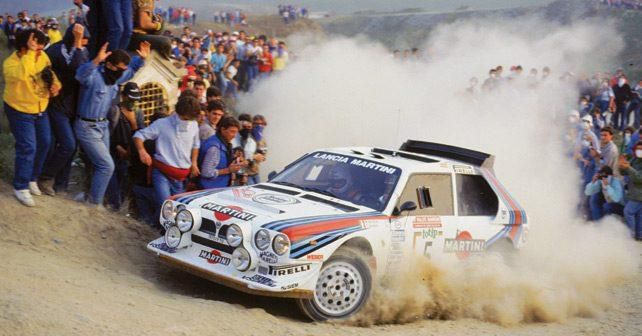
Such was the impact of the Group B era of WRC, that they are the inspiration for the added muscle of today’s cars
Formula 1 in the forests. Sounds far-fetched and downright scary doesn’t it? Well that pretty much sums up the Group B era of the FIA World Rally Championship that rivaled the popularity of F1 in the mid-1980s, when it was at its peak. And that is during the time when the popularity of F1 itself was mighty high. Technically it was true as well with the scariest of these machines – the Lancia Delta S4 – taking the same time to get from zero to 100 km/h as an F1 car, around 2.5 seconds. The Lancia along with the highest evolution of the Audi Quattro, the Peugeot 205 T16, Ford RS 200 and Renault 5 Maxi Turbo all making close to or in excess of 600 bhp. Couple that with safety standards that were nowhere near that of today, rudimentary understanding of aerodynamics - the big wings were made without the scientific approach of today – and the fact that the cars had a manually operated gearbox and three pedals and you have the stuff of legend. For that is the status to which the drivers who drove these cars were elevated to.
The question you may be asking while reading this, however, is why is this being talked about now? The more informed motorsport fans would know that the Group B era is one that has been written about quite extensively. Well, that’s because thanks to the dipping popularity of the WRC as it is today and the lingering images and videos of the Group B monsters thanks to the web has made it relevant.
So much so that the FIA has decided to take the technical shackles off the current machines and allowed modifications that is expected to shatter the stage record for Rally Finland’s Ouninpoujha, the fastest stage on the WRC calendar.
So briefly revisiting the era that still continues to excite and has inspired the WRC machines putting on some quality muscle mass seems fitting.
NO LIMITS
You hear much talk about budgetary concerns forcing limits on how much designers and engineers can do to make cars fast these days. Back in the days of baggy white shirts, blue jeans and white sneakers, there was little standing in the way of those in the drawing room. In order to have some road relevancy, any car running under Group B regulations was required to have at least 200 road-going versions made in order to be homologated. That aside, the door was open to pretty much go nuts.
The precursor to how creative designers could get was Lancia’s Stratos, a Ferrari-powered, rear-wheel-drive machine that was essentially a supercar on a rally stage. Audi soon raised the stakes with its Quattro four-wheel-drive system and a five-cylinder turbo engine that soon forced every manufacturer to go down that route.
Lancia held on steadfastly to the rear-wheel-drive philosophy with the beautiful 037 but it was clear that it was time to make an upgrade. Especially in the face of Audi and even two French manufacturers. Utilizing a light-weight hatchback-derived design, both the Peugeot 205 T16 and the Renault 5 Maxi Turbo were more nimble than the Audi and the Lancia. Even the Ford RS200 and the MG Metro 6R4 showed that stuffing a lot into a smaller package was the way to go.
By the time the penny dropped for Lancia, however, the ‘Killer Bs’ had gotten out of hand. To the point that the power had become too much for even the best rally drivers of the generation to tame.
Two deaths at the San Remo Rally in 1985 and 1986 were the nail in the coffin for these cars. Especially as the death in ’86 was that of Henri Toivonen, WRC’s equivalent of Gilles Villeneuve. Sense prevailed and the WRC took a step back from 1987. But now it seems like technology has caught up with the will to go hell for leather. Although the death of a spectator at Monte Carlo is proof of the need to remain wary.

























Write your Comment